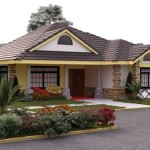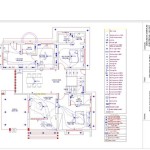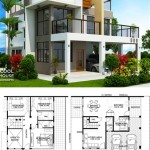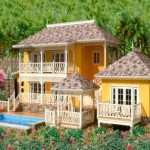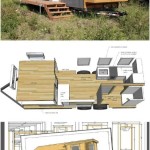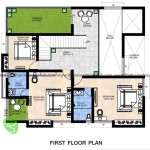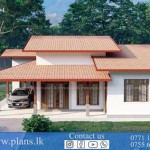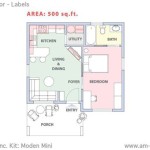The Allure and Implications of Huge Floor Plans
The concept of a "huge floor plan" is subjective, varying based on geographic location, prevailing architectural styles, and the intended use of the structure. Generally, it implies a residential or commercial space significantly larger than the regional average. This article explores the appeal of expansive floor plans, the advantages they offer, the challenges they present, and the considerations necessary when designing, purchasing, or maintaining such properties. The definition of "huge" will shift based on context; a 2,500 square foot apartment in Manhattan might be considered spacious, while a 2,500 square foot single-family home in a rural area might be considered modest.
The desire for more space is often driven by a family’s growing needs. As families expand, the demand for additional bedrooms, bathrooms, and living areas increases. Homeowners may require dedicated office space for remote work, playrooms for children, or in-law suites for aging parents. Large floor plans can comfortably accommodate these requirements, providing separate zones for various activities and ensuring privacy for individual family members. Furthermore, the trend toward multi-generational living has further fueled the demand for larger residences capable of housing multiple family units under one roof.
Beyond family needs, the appeal of a large floor plan can stem from lifestyle preferences. Individuals who enjoy entertaining frequently benefit from expansive living and dining areas capable of accommodating large gatherings. Those who pursue hobbies requiring considerable space, such as art, music, or fitness, may seek properties with dedicated studios or workout rooms. Ultimately, the allure of a huge floor plan is frequently rooted in the perceived improvement in quality of life that such a space can offer.
Commercial applications of huge floor plans are equally diverse. Warehouses, distribution centers, manufacturing facilities, and large retail stores all require substantial floor space to operate efficiently. In these settings, the scale of the floor plan directly impacts productivity, storage capacity, and overall operational capabilities. Careful planning is crucial to optimize workflows and minimize wasted space within these expansive environments.
Benefits of Expansive Floor Plans
One of the primary benefits of a huge floor plan is the enhanced sense of space and freedom it provides. Ample room to move around and pursue activities without feeling constricted can contribute to a more relaxed and comfortable living or working environment. This is particularly relevant in densely populated urban areas where space is at a premium. The ability to create distinct zones within a large floor plan allows for greater flexibility in how the space is utilized.
Another significant advantage is the potential for improved organization and storage. A large floor plan offers ample opportunities to incorporate custom storage solutions, such as walk-in closets, pantry spaces, and built-in shelving. This can help to minimize clutter and maintain a more organized and aesthetically pleasing environment. In commercial settings, this translates to more efficient inventory management and reduced risk of product damage.
Furthermore, a well-designed large floor plan can significantly enhance property value. While the correlation between size and value is not always linear, larger properties generally command higher prices, especially in desirable locations. The perceived exclusivity and prestige associated with owning or occupying a substantial space can also contribute to its appeal and market value. However, it's important to note that factors such as location, architectural design, and overall condition also play crucial roles in determining property value.
Challenges Associated with Large Spaces
While the benefits of huge floor plans are undeniable, there are also significant challenges that must be addressed. One of the most prominent is the increased cost of heating, cooling, and lighting. Larger spaces require more energy to maintain a comfortable temperature and adequate illumination, leading to higher utility bills. This is particularly true in older buildings with poor insulation or inefficient heating and cooling systems.
Another challenge is the increased cost of maintenance and upkeep. Cleaning, repairs, and landscaping can be significantly more expensive for larger properties. For example, cleaning a large house can take considerably more time and effort than cleaning a smaller apartment. Similarly, maintaining a large yard can require professional landscaping services, adding to the overall cost of ownership. Commercial properties face even greater maintenance demands due to the higher volume of traffic they experience.
The potential for inefficient space utilization is another concern. A poorly designed or furnished large floor plan can feel cavernous and uninviting. It is crucial to carefully consider the layout and flow of the space to ensure that it is both functional and aesthetically pleasing. This may involve hiring an interior designer or architect to optimize the use of space and create a cohesive design scheme. The challenge also extends to efficiently heating and cooling the entire space without creating uncomfortable temperature variations.
Considerations for Designing and Managing Huge Floor Plans
When designing a huge floor plan, careful attention must be paid to the layout and flow of space. The goal should be to create a functional and aesthetically pleasing environment that meets the specific needs of the occupants. This may involve dividing the space into distinct zones or creating open-plan areas that promote social interaction. The use of lighting, color, and texture can also play a crucial role in defining different areas and creating a sense of visual interest.
Energy efficiency is a critical consideration in the design and management of large floor plans. High-performance insulation, energy-efficient windows and doors, and smart thermostats can help to reduce energy consumption and lower utility bills. The selection of appropriate HVAC systems is also essential. Zoned heating and cooling systems allow for independent temperature control in different areas of the building, further optimizing energy efficiency. Using LED lighting throughout the property can also significantly reduce energy consumption.
Regular maintenance and upkeep are essential for preserving the value and functionality of a large property. This includes routine cleaning, repairs, and landscaping. Preventive maintenance, such as regularly inspecting and servicing HVAC systems and addressing minor repairs promptly, can help to prevent more costly problems from developing in the future. For commercial properties, it is essential to establish a comprehensive maintenance plan that addresses all aspects of the building's operation.
Security is another important consideration. Larger properties may be more vulnerable to theft or vandalism. Security systems, such as alarms, surveillance cameras, and motion detectors, can help to deter criminal activity and protect the occupants and their belongings. Adequate lighting around the perimeter of the property is also essential for enhancing security. In commercial settings, security personnel may be necessary to monitor access points and patrol the grounds.
The choice of materials and finishes can significantly impact the overall cost and maintenance requirements of a large floor plan. Durable and low-maintenance materials, such as tile, hardwood, and stone, are often preferred for high-traffic areas. Selecting high-quality paints and finishes can also help to extend the lifespan of interior surfaces. Careful consideration should be given to the environmental impact of materials as well, opting for sustainable and eco-friendly options whenever possible.
Finally, the accessibility of the space should be considered, particularly for individuals with mobility issues. Wide doorways, ramps, and accessible restrooms can ensure that the property is accessible to people of all abilities. This is especially important for commercial properties that are required to comply with the Americans with Disabilities Act (ADA). Thoughtful design can create welcoming and inclusive spaces for everyone.

House Plands Big Floor Plan Large Images For Su Plans Американские дома Планы этажей Чертежи

Pin On Floor Plans

Spacious And Open Best Floor Plans For Families Blog Homeplans Com

Large Luxury Home Plans With Pictures Houseplans Blog Com

Large House Plan Examples

Humber House Mansion Plans Luxury

Floor Plan Friday Huge Family Home With Library Or 5th Bedroom
Luxury House Plans Mediterranean Home Design Vasari 11521

The Chinaberry House Plans Southern Bite

Hampton Mill Travars Built Homes

